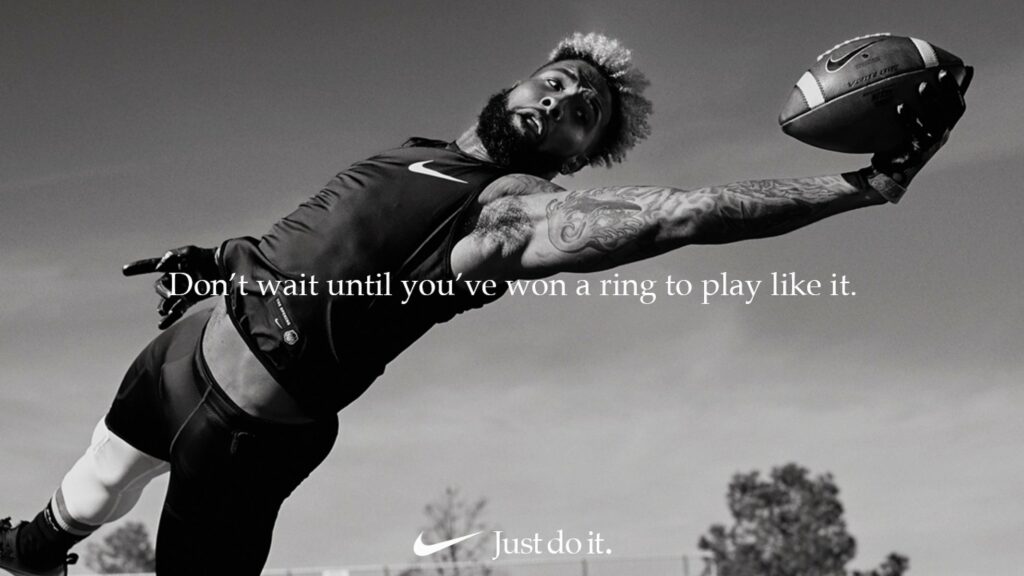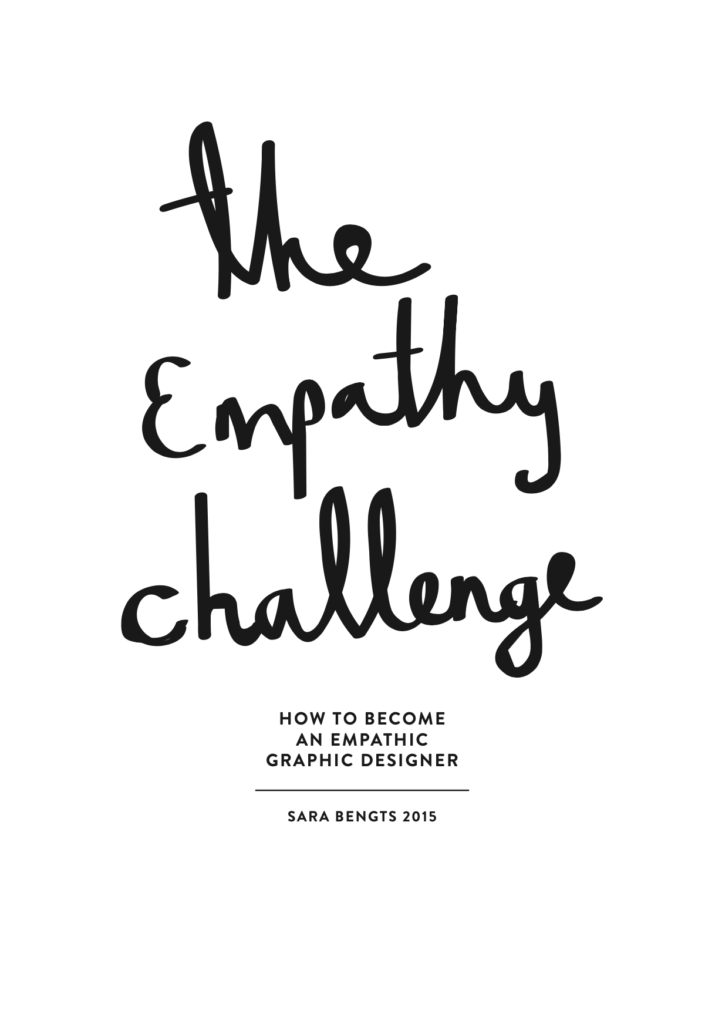A revised version of my Exposé.
Joyful Brands
Wie kann man in der Gestaltung eine Markenidentität (ob Produkt- oder Unternehmensmarke) strategisch mit positiven Emotionen konnotieren?
1. Problem
In der gegenwärtigen Designpraxis greift man zu etablierten Designmethoden wie Design Thinking oder Human Centered Design. Diese Methoden helfen dabei, Probleme zu erkennen und diese mithilfe von Gestaltungsmaßnahmen zu lösen. Der Fokus liegt also auf der Problemlösung. Selten bis gar nicht bewegt sich der Anspruch auf der Gestaltung einer Lösung welche explizit positive Emotionen auslöst.
Hierbei wird großes Potenzial verschwendet. Die heutige Zeit, geprägt von Krisen, verlangt nach aktiver Optimierung unseres Umfelds. Erfolgreiche Marken sollten neben der Problemlösung sich vor allem auch auf das Triggern von positiven Emotionen fokussieren. Der Einfluss der Gestaltung, in Bezug auf positive Markenkonnotationen, wird im Designprozess viel zu leicht ignoriert. Der Schwerpunkt liegt zu oft auf dem Neutralisieren von Problemen, jedoch nicht im Erkennen von Chancen und emotionalen Mehrwert.
Ein weiteres Problem stellen abstrakte Darstellungen von Methoden und Frameworks dar. Diese bieten keinen konkreten Fahrplan, der nach individuellen Bedürfnissen befolgt werden kann, um eine strategische Konnotation von positiven Emotionen für das Endprodukt—in diesem Fall die Marke und deren Kommunikationsmittel—zu entwickeln. Es fehlt somit an konkreten, strategisch und psychologisch fundierten Frameworks.
2. Forschungsstand
Design Thinking als auch Human Centered Design Thinking zählen zu etablierten Methoden/ Prozessen, um Gestaltungsaufgaben strategisch entgegenzutreten. Der Fokus bei diesen Methoden liegt auf dem Prozess der Problemlösung durch Gestaltung. Diese problemorientierten Designmethoden rücken jedoch eine wesentliche Chance von Design in den Hintergrund: das Fördern von Mehrwert durch das Triggern von positiven Emotionen.
Durch den problemorientierten Lösungsansatz können negative Situationen neutralisiert werden. Der Mensch und ein potenzielles Problem, das gelöst bzw. neutralisiert werden soll, um ein Grundbedürfnis zu stillen, stehen im Zentrum.
Hierbei werden aber 50 % an Potenzial, ein erfolgreiches Produkt zu entwickeln, das Freude bereitet, das Wohlbefinden steigert und unter anderem durch gesteigerte Produktbindung einen nachhaltigeren Konsum fördert, nicht optimal genutzt.
Ebenso gibt es laut aktuellem Stand keinen konkreten Fahrplan, der im Designprozess herangezogen werden kann, um strategische Lösungsansätze in Bezug auf (positive) Emotionen zu entwickeln. Der Forschungsstand, vor allem in der positiven Psychologie und der Wahrnehmungspsychologie ermöglichen es nicht nur eine solche Methode bzw. ein solches Framework konkret zu definieren, sondern verweisen auch auf die Relevanz der bewussten Integration.
3. Forschungsfrage
Wie kann eine Marke (ob Produkt- oder Unternehmensmarke) und/oder deren Kommunikationsmittel strategisch mit positiven Emotionen konnotiert werden?
4. Zielsetzung der Arbeit
Ziel der Arbeit ist die Entwicklung eines Design Frameworks.
Das Framework soll als Fahrplan in der Gestaltung einer Markenidentität und in weiterer Folge der Markenkommunikation dienen, um diese strategisch mit positiven Emotionen zu konnotieren. Der Designprozess soll somit konkretisiert und erleichtert werden.
Folgende Mängel sollen behoben werden:
Problemorientiertes Design
Das Framework soll den Fokus auf positive Konnotation und Mehrwert lenken und vor allem dabei helfen Chancen zu erkennen und zu nutzen (= Possibility Driven Design), anstatt negative Ausgangspunkte lediglich zu neutralisieren.
Mangel an konkreten strategischen Frameworks
Ebenso soll das Framework einen fundierten und vor allem konkreten Fahrplan auf Grundlage von psychologischen als auch ästhetischen Aspekten bieten.
Das neue Konzept soll unter anderem etablierte Konzepte der Markenkommunikation, des Human Centered Design, Design Thinking, Positive Design, Possibility Driven Design, Storytelling Frameworks, als auch Erkenntnisse aus fachlichem Wissen (Designprinzipien, Psychologie) in einem konkret definierten und fundamentierten Framework vereinen.
Das Framework soll letztendlich in grafischer Form, zur besseren Nachvollziehbarkeit, dargestellt werden. Detaillierte Beschreibungen zu einzelnen Schritten sollen hierbei von einer begleitenden Publikation unterstützt werden. Optional: Abhängig von der letztendlichen Komplexität des Framework wird eine Aufbereitung in Form einer Website angedacht.
5. Theoriebezug
Es wird Bezug auf Konzepte und Erkenntnisse der Markenkommunikation, des Human Centered Design, Design Thinking, Positive Design und Possibility Driven Designs genommen. Genannte Konzepte erleichtern Abläufe des Designs oder nehmen auf spezifische Problemstellungen Bezug—das jedoch in sehr vager und abstrakter Form.
Beispiel: Positive Design Framework
Das Positive Design Framework beschäftigt sich explizit damit, positive Emotionen hervorzurufen. Es setzt sich aus den Ebenen “Design for Pleasure”, “Design for Personal Significance” und “Design for Virtue” zusammen. Es berücksichtigt somit drei essentielle psychologische Faktoren, auf welche im Designprozess Bezug genommen werden kann.
Diese drei wichtigen Pfeiler sollen auch in meinem Framework einen Platz finden, jedoch mit weiteren Erkenntnissen anderer relevanter Designmethoden, der positiven Psychologie, aber auch ästhetischen Aspekten ergänzt werden um eine umfangende Übersicht zu bieten.
Das Framework soll Erkenntnisse der genannten Methoden integrieren—aber vor allem fehlende konkretere Elemente fundierter Designprinzipien und Psychologie ergänzen. Daher wird sich die Arbeit neben bekannten, etablierten Designmethoden und Prozessen auch genau mit Erkenntnissen der positiven Psychologie, Wahrnehmungspsychologie und mit grundlegenden Prinzipien des Designs beschäftigen.
6. Methode
Phase 01
Intensive Literaturrecherche mit Fokus auf Wahrnehmungspsychologie, Designprinzipien, Frameworks, Designmethoden und positive Psychologie
Phase 02
Auswertung der Literaturrecherche (Pro und Kontra, Chancen)
Phase 03
Recherche & Analyse aktueller Designmethoden / Frameworks (Pro und Kontra, Chancen) Phase
Phase 04
Recherche & Analyse von Fallbeispielen Phase
Phase 05
(Optional, falls eine Umfrage Mehrwert bringt)
Qualitative Umfrage (Psychologische & Ästhetische Aspekte) & Auswertung Phase
Phase 06
(Optional, falls Interviews Mehrwert bringen)
Experteninterviews
Phase 07
Entwicklung des “Design Frameworks” auf Basis d. Erkenntnisse aus Literatur, Fallbeispielen und den Umfragen
Phase 08
Testphase des Frameworks
Phase 09
Feedback und Analyse
Phase 10
Optimierung der Methode
Phase 11
Anwendung des finalen “Design Frameworks” anhand eines praktischen Beispiels
Phase 12
Conclusio
Phase 13
Visuelle Aufbereitung des Frameworks und Finalisieren der Publikation
7. Material
Im Zuge meiner Recherche bin ich auf das Joyful Design Framework von Himanshu Bharadwaj gestossen, das die Notwendigkeit der Integration von positiven Emotionen argumentiert, und auch Ansätze zur Integration vorgibt. Das Framework gibt jedoch nur sehr abstrakte Begrifflichkeiten/Ansätze vor und konzentriert sich auf die Integration von Joyful Design auf Innovations- und Leadership Ebene. “A unifying design thinking process to redesign our business, rewire how we think about innovation, and rejuvenate our minds.” (https://www.joyful.design/joyful-design)
Mein Ziel ist es jedoch ein konkretes Framework zu bieten, das mögliche Wege zur Integration genau beleuchtet. Zum Beispiel, welche konkreten strategischen Interventionen getroffen werden können.
Beispiel: Symbolische Bedeutung.
Was ist symbolische Bedeutung? Welche Rolle spielt es in einer positiven Konnotation und wie kann symbolische Bedeutung integriert werden?
Beispiel: Brand Storytelling.
Wie kann Brand Storytelling Einfluss auf die Gestaltung der Marke nehmen um positive Emotionen auszulösen?
Das Framework soll verschiedene Wege aufzeigen und diese mit Fallbeispielen und genauer Argumentation, durch die zusätzliche Publikation, belegen.
Eine geeignete Bezeichnung für das Framework und Titel der Arbeit muss im Zuge der Arbeit noch gefunden werden.
In Bezug auf “Joyful Design” liegen Literatur als auch TED Talks vor—jedoch mit Fokus auf Psychologie & Mindset und Innenarchitektur & Environmental Design.
Vorhandenes Material:
Literatur
Positive Psychologie, Wahrnehmungspsychologie, Design Thinking, Human Centered Design, UX Design, Empathisches Design, Joyful Design—Fokus jedoch auf Innenarchitektur, Environmental Design
TED Talks
Wahrnehmungspsychologie, Joyful Design
Statistiken
Positive Design Impact
Daten
Happiness Research Institute
Case Studies
“Argumentationsmaterial”
Qualitative Befragung
Psychologische, Ästhetische Kriterien
Was muss noch ermittelt werden:
Verwandte Designmethoden / Frameworks
Qualitative Befragungen “Extended”
Psychologische, Ästhetische Kriterien
8. Vorläufiges Literaturverzeichnis
Dutton, Denis (Februar 2010): A Darwinian theory of beauty. IN: TED, https://www.ted.com/talks/ denis_dutton_a_darwinian_theory_of_beauty (last retrieved December 01, 2020)
Fetell Lee, Ingrid: Joyful: The Surprising Power of Ordinary Things to Create Extraordinary Happiness. London: Rider 2018
Fetell Lee, Ingrid (April 2018): Where joy hides and where to find it. IN: TED, https://www.ted.com/talks/ ingrid_fetell_lee_where_joy_hides_and_how_to_find_it (zuletzt aufgerufen am 08.12.2021)
Günder, Gabrielle (Oktober 2020): Empathic Branding. At the Peter Schmidt Group. IN: Page. Connect creative competence. https://cms.peter-schmidt-group.de/web/sites/default/files/2021-03/PAGE_Connect_EMPATHIC_BRANDING_Peter_Schmidt_Group_English.pdf (zuletzt aufgerufen am 08.12.2021)
Günder, Gabrielle (Oktober 2021): Sustainable Design. At the Peter Schmidt Group. IN: Page. Connect creative competence. https://page-online.de/shop/connect-booklet-sustainable-design-bei-der-peter-schmidt-group/ (zuletzt aufgerufen am 08.12.2021)
Lidwell, William / Holder, Kritina / Butler, Jill: Universal Principles of Design, Revised and Updated: 125 Ways to Enhance Usability, Influence Perception, Increase Appeal, Make Better Design Decisions, and Teach through Design. Beverly: Rockport 2010
Lupton, Ellen: Design is Storytelling. New York: Cooper Hewitt 2017 Martin, Bella / Hanington, Bruce: Universal Methods of Design, Expanded and Revised: 125 Ways to Research Complex Problems, Develop Innovative Ideas, and Design Effective Solutions. Beverly: Rockport 2019
Möller, Norbert. Creativity as a Catalyst for Change. IN: https://www.peter-schmidt-group.de/de/insights-und-news/creativity-catalystchange (zuletzt aufgerufen am 08.12.2021) Möller, Norbert (Hamburg, 20.09.2021): Die passenden Codes der Kommunikation. IN: https://www.peter-schmidt-group.de/ de/insights-und-news/die-passenden-codes-der-kommunikation (zuletzt aufgerufen am 08.12.2021)
Möller, Norbert (Hamburg, 22.09.2021): Wir vertrauen unseren Augen – und folgen doch unseren Ohren. Ohne es zu ahnen. IN: https://www.peter-schmidt-group.de/de/insights-und-news/wir-vertrauen-unseren-augen-und-folgen-doch-unseren-ohren-ohnees-zu-ahnen (zuletzt aufgerufen am 08.12.2021)
Möller, Norbert. Wenn das Gemeinsame viel geiler ist, als Geiz. IN: https://www.peter-schmidt-group.de/de/insights-und-news/ wenn-das-gemeinsame-viel-geiler-ist-als-geiz (zuletzt aufgerufen am 08.12.2021)
Norman, Don: The Design of Everyday Things: Revised and Expanded Edition. New York: Basic Books 2013
Sagmeister, Stefan / Walsh, Jessica: Sagmeister & Walsh: Beauty. Schönheit = Wahrheit / Schönheit = Funktion. New York: Phaidon 2018
Seymour, Richard: How Beauty Feels. IN: TED, https://www.ted.com/talks/richard_seymour_how_beauty_feels (zuletzt aufgerufen am 28. Dezember 2020)
Weinschenk, Susan M.: 100 things every designer needs to know about people. 2nd edition. o.O.: Peachpit 2020
Wiking, Meik: The Art of Making Memories: How to Create and Remember Happy Moments.
Harper Collins: New York 2019. Yablonski, Jon: Laws of UX: 10 praktische Grundprinzipien für intuitives, menschenzentriertes UX-Design.
Heidelberg: dpunkt 2020 Yablonski, Jon: Laws of UX: Using Psychology to Design Better Products & Services. Sebastopol: O’Reilly Media 2020
9. Vorläufige Gliederung
Abstract
Introduction
1 What is joy?
2 Why Designing Joyful Brands?
Mental Impact (Wellbeing, Health & Productivity)
Ethical Impact Sustainability
Visual Brand
3 Components of Brand Identity Design
Brand Culture and Values
Position in the market
Visual Brand
4 Psychology
Evolution
Positive Psychology
Identity Based Human Behavior Design & Emotions
(Empathic Design, Emotional Design, Symbolic Meaning)
Case Studies Qualitative Research, Evaluation
5 Aesthetics
Evolution
Psychology of Perception
Case Studies
Qualitative Research, Evaluation
6 Design Processes, Methods & Frameworks
Brand Storytelling
Joyful Design Thinking
Human Centered Design
Design Thinking
Possibility Driven Design
Brand Storytelling Framework
Positive Design Framework
Evaluation
7 Design Framework
Development Testing, Feedback & Adjustments
The Framework
Application
Glossar
Sources
10. Zeitplan
(Projektphasen und -dauer)
Dezember 2021—März 2022
Recherche
Februar—März/April
Datenauswertung
Optional: April
Qualitative Befragungen & Auswertung Experteninterview
April
Überarbeitung Entwicklung des Frameworks
April—Mai
Korrekturlesen Anwendung des Frameworks / Werkstück
Mai—Juni
Optimierung des Frameworks / Werkstück Layout
Juni—Juli
Schlusskorrektur
Ende Juli/Anfang August 2022
Produktion
11. Projektteam
Konkrete Kooperationspartner/Auftraggeber sind noch nicht vorhanden









